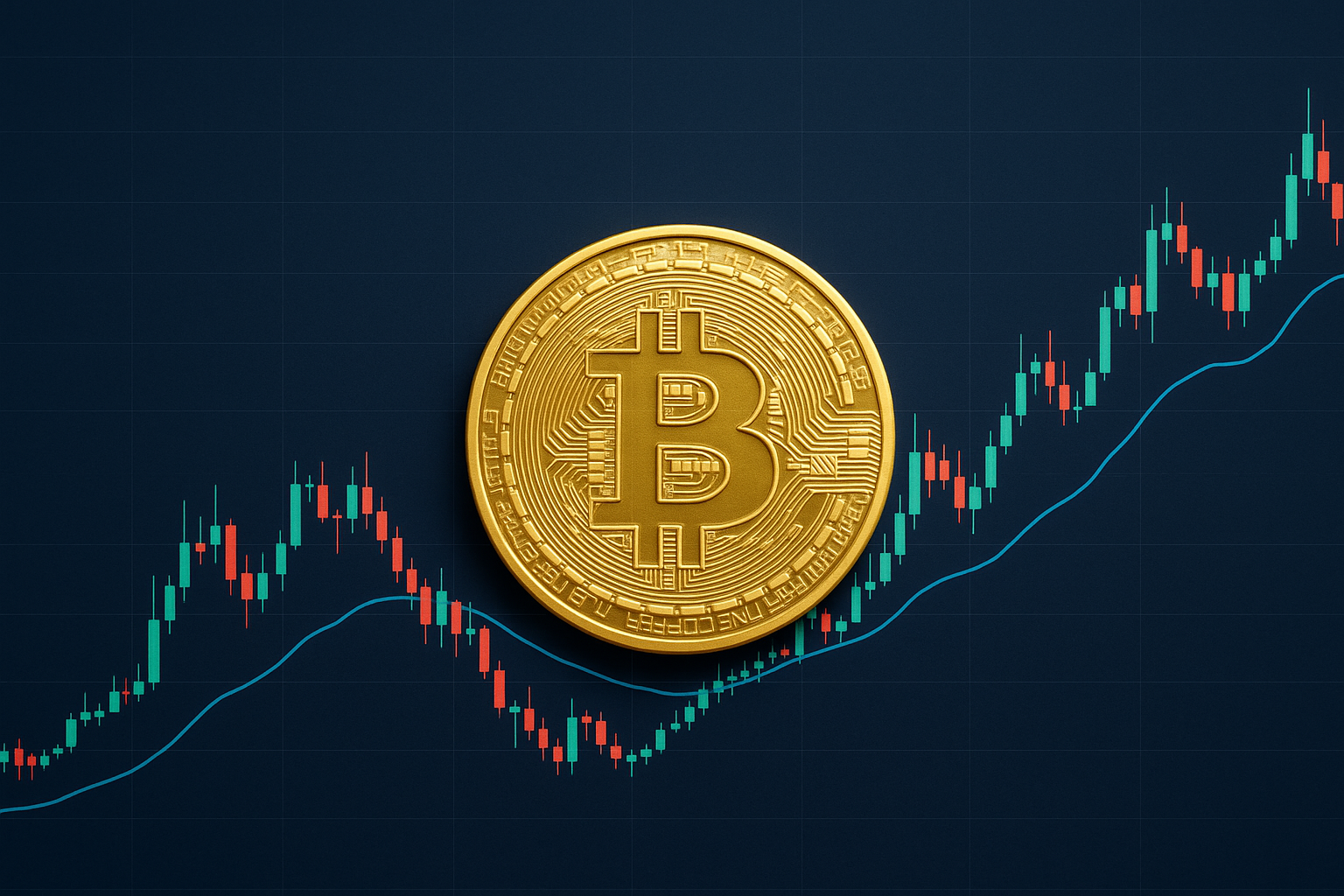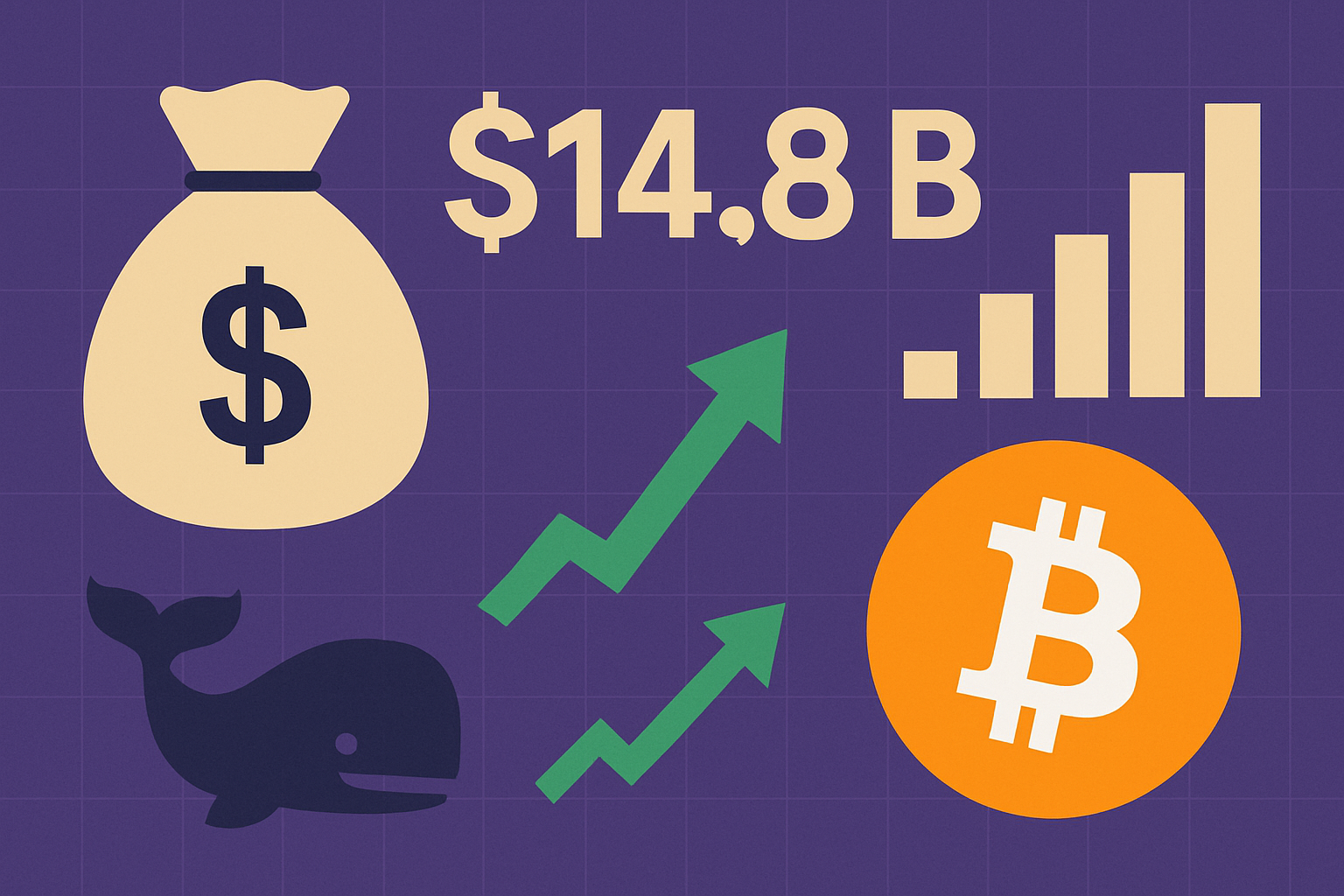Introduction
Bitcoin, the world’s largest cryptocurrency by market capitalization, has once again found itself at a critical juncture. After a brief rally last week that pushed the price to the $60,500 mark, BTC has failed to maintain upward momentum and is now consolidating just below the psychologically important $60,000 level. This stall in price movement has coincided with rising global economic uncertainty, particularly surrounding upcoming U.S. inflation data and potential interest rate decisions by the Federal Reserve. Traders and analysts are divided on whether Bitcoin’s current pause is a healthy consolidation before another leg higher or an early warning of a deeper correction.
Why The $60k Level Matters?
In cryptocurrency markets, certain price points take on symbolic and psychological importance, and $60,000 is one of them for Bitcoin. This level has historically acted as both strong resistance and support during different market cycles. Breaking above it decisively in the past has often signaled the start of sustained bullish runs, while failure to hold it has triggered swift sell-offs.
At the moment, the $60K mark serves as a battleground between bulls and bears. For bullish traders, reclaiming and holding above $60K would be a clear signal that market sentiment remains strong and that institutional buyers are stepping in to support prices. For bearish traders, the inability to close above this threshold reinforces the narrative that Bitcoin might be due for a deeper pullback, possibly toward the $58K support zone or even lower.
Macroeconomic Factors Weighing On Bitcoin
One of the key reasons for Bitcoin’s current indecision is the macroeconomic backdrop. Investors are closely watching the release of U.S. inflation figures, which are expected later this week. Inflation remains a major driver of central bank policy, and any unexpected uptick could cause the Federal Reserve to delay or reconsider planned interest rate cuts.
Higher interest rates generally put downward pressure on risk assets, including Bitcoin, as borrowing costs increase and investors gravitate toward safer, yield-generating instruments such as government bonds. Conversely, if inflation data comes in lower than expected, markets may price in faster and deeper rate cuts, which could provide a tailwind for Bitcoin and other cryptocurrencies.
Global economic conditions also play a role. The Chinese economy is showing signs of slowing growth, Europe is facing ongoing energy market challenges, and geopolitical tensions remain elevated in multiple regions. All of these factors contribute to an environment of uncertainty, prompting some traders to stay on the sidelines until more clarity emerges.
Technical Analysis: Support And Resistance Levels
From a technical perspective, Bitcoin is trading in a narrow range between $58,000 and $60,500. The 50-day moving average is currently acting as immediate resistance, while the 200-day moving average sits further below, providing a stronger base of support.
Momentum indicators such as the Relative Strength Index (RSI) show neutral readings, suggesting neither extreme overbought nor oversold conditions. However, the Moving Average Convergence Divergence (MACD) line is flattening, indicating a potential slowdown in bullish momentum.
If Bitcoin fails to reclaim $60,000 in the coming days, a retest of the $58,000 support level appears likely. A decisive break below $58K could open the door to further downside toward $56,500, where buying interest may re-emerge. On the upside, a strong push above $60,500 with high trading volume could quickly propel BTC toward the $62,000–$63,000 range.
Market Sentiment: Mixed Signals
The broader crypto community is sending mixed signals about the current price action. On one hand, long-term holders, often referred to as “HODLers,” appear unfazed by short-term volatility. On-chain data shows that a significant portion of Bitcoin supply has not moved in over six months, indicating strong conviction among core investors.
On the other hand, derivatives markets are showing increased short positions, suggesting that traders in the futures market are betting on near-term price weakness. Open interest on major exchanges has risen, signaling heightened speculative activity that could lead to sharper price swings in either direction.
Institutional Participation And ETF Flows
One of the major developments in recent months has been the increasing role of institutional investors in Bitcoin markets, particularly through Bitcoin exchange-traded funds (ETFs). While ETFs saw consistent inflows earlier this year, the past two weeks have shown a slowdown, with some funds even experiencing modest outflows. This cooling of institutional demand could be a factor contributing to Bitcoin’s inability to break above $60K with conviction.
However, analysts note that institutional buying often returns after periods of consolidation, especially if macroeconomic data supports a risk-on environment. The next round of quarterly corporate earnings could also influence sentiment, as strong results may encourage more aggressive allocation to crypto assets.
Historical Parallels: Lessons From Previous Cycles
Bitcoin’s current price action bears some resemblance to periods in 2017, 2020, and 2021 when the cryptocurrency faced prolonged consolidation near key resistance levels before eventually breaking higher. In each of those cases, the consolidation phase was followed by sharp moves — either upward breakouts or swift corrections.
In 2017, Bitcoin hovered below $5,000 for weeks before surging to new highs. In 2020, BTC struggled near $12,000 before breaking out to $20,000. In 2021, repeated attempts to breach $60,000 were met with resistance before an eventual rally to $69,000. These patterns suggest that extended consolidation often leads to significant volatility once the market chooses a direction.
Potential Scenarios For The Coming Weeks
Given the current market setup, there are several plausible scenarios for Bitcoin in the short term:
Bullish Breakout – If inflation data comes in softer than expected and rate cut expectations rise, Bitcoin could break decisively above $60K and target the $62K–$65K range.
Bearish Pullback – A hotter-than-expected inflation report could strengthen the U.S. dollar and pressure Bitcoin toward $58K or lower.
Extended Consolidation – Bitcoin may continue trading between $58K and $60K, frustrating both bulls and bears until a catalyst emerges.
The Role Of Altcoins And Market Correlation
Bitcoin’s performance also has a ripple effect on the broader cryptocurrency market. When BTC is range-bound, altcoins often see lower volatility and reduced trading volumes. However, a decisive move in Bitcoin — in either direction — can trigger sharp moves across the altcoin space as traders reposition their portfolios.
Ethereum, the second-largest cryptocurrency, is currently facing its own technical hurdles, and many traders are watching to see if ETH can provide a leading signal for broader market direction. If Ethereum breaks higher, it could bolster confidence in a Bitcoin rally, while a decline could amplify bearish sentiment.
Long-Term Outlook Remains Positive
Despite short-term uncertainty, many analysts remain optimistic about Bitcoin’s long-term trajectory. Factors such as growing adoption by payment platforms, increased corporate treasury allocations, and the upcoming Bitcoin halving event in 2028 continue to underpin the bullish case.
Additionally, Bitcoin’s reputation as a hedge against currency debasement remains strong among investors who are concerned about central bank policies and fiscal sustainability. The finite supply of 21 million coins provides a scarcity factor that many traditional assets lack, reinforcing its appeal as a store of value.
Conclusion
For now, Bitcoin’s inability to push past $60,000 is less a sign of weakness and more a reflection of broader market caution. The coming days, particularly the release of U.S. inflation data and any shifts in Federal Reserve policy guidance, are likely to determine whether BTC can reclaim its bullish momentum or faces a deeper correction.
Traders and investors alike should prepare for heightened volatility, as macroeconomic catalysts converge with technical resistance at a crucial price level. Whether Bitcoin’s next big move is upward or downward, the stage is set for significant action in the weeks ahead.














